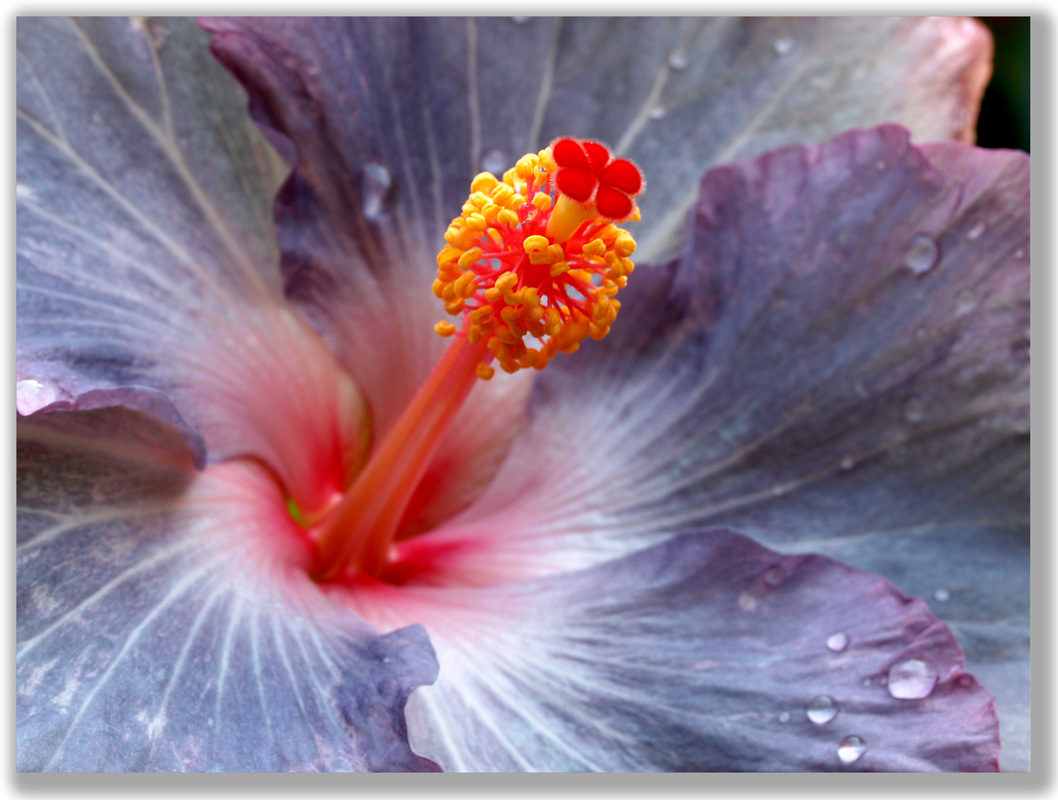|
Chris Fedderson — MacroFine Musings Kathy Lawler, Guest Blogger [This post is an elaboration on the fourth point I made in my post of November 10, 2015 Five ways to raise your photo IQ (Interest Quotient)] ~~~~~~~~~~~~~~~~~~~~~~~~~~~~~  Basic Color Wheel Showing Basic Color Wheel ShowingPrimary and Complementary Colors Color is a complicated subject — I’ve touched on it before — and is one of the five biggies in a photograph — along with focus, composition, lighting, and your hook. There are countless articles you can read on Color Theory; it seems you can spend a lifetime studying color interplay. But it is very helpful to know what colors work well together and why. As we saw recently with the blue/black or white/gold dress fiasco, color is powerful and varied — given how the image is photographed, and on how you, the viewer, interpret the colors. The original dress photo was overexposed and the white balance was off. While this phenomenon was interesting for a few minutes, you don’t want your images to be this misunderstood. Here the basic color wheel shows the relationship between colors. You will find that knowing and considering even the basics of color and color wheels can help make your photos dynamic. Let’s discuss how to use this understanding to your advantage. The language surrounding color can be a mystery so let’s take a look at a few terms that will help you.
How these characteristics work together is what you want to consider to help you to create a dramatic image. The color wheel will help you think about color in an organized way and will explain how colors can be combined for a variety of effects. If you are a nature photographer, the good news is that nature does at lot of this stuff for you, your job is to capture it. For studio work you will need to put a little more consideration into your backgrounds and set-ups. Here is a basic color wheel that shows the relationship between colors. You will find that knowing and considering even the basics of color and color wheels can help make your photos dynamic. Let’s discuss how to use this understanding to your advantage.  Red/Green Color Combination Red/Green Color Combination Here are few types of dynamic color combinations to experiment with: Complimentary colors — these are opposite each other on the color wheel and can create striking color combinations. For example, a red flower against green leaves produces a beautiful contrast.  Analogous and Complimentary Colors Analogous and Complimentary ColorsWorking Together Analogous colors are next to each other on the color wheel and are pleasing combinations and often occur in nature. Think of fall leaves: red, orange, and yellow. Now pair that with a blue sky and you have used complimentary with analogous colors. Stunning! Just look here!  Warm (orange) vs. Cool (blue) interaction Warm (orange) vs. Cool (blue) interaction Warm colors vs. cool colors. These can make an object recede or move forward in the image. Imagine how powerful that could be in your image! You may think you don’t have control over the color in your images as you shoot images in nature or how you set up a photo shoot. This is where some color knowledge, and what you consider when shooting, comes into play.
Are you shooting a red flower and your angle has you shooting against dirt? If so, consider adjusting your angle to put a better color combination or a more dynamic one into the background. If you looked at the flower from a different angle — from the right or left or higher or lower — perhaps there is a better background color with which you can compliment the red flower. Are there green leaves in the background on one side if you bend down and shoot from the side rather than from the top? Warm colors, red and yellow for example, will advance in a scene (look to be more in the foreground) vs. cool colors, blues and greens, will recede (appear more in the background). You can see how important considering color combinations is and how they will influence the outcome of your images. These are just a few basic color combination examples, but you will learn as you study color which combinations give you the look you are striving for; the look that is unique to your work. And, as always, breaking the rules after you learn them is what leads to your unique look and feel. And it’s fun. Happy coloring! Thank You for visiting, — Kathy Lawler, guest blogger P.s. Experiment with unusual combinations and tell us how these worked out. What are your favorite color combinations? What do they “do” for you? Have you noticed the occurrence of the use of any color-play in life? [… think Denny’s color scheme] What affect did these uses produce?
1 Comment
|
Categories
All
About Chris
I am a Virginia-based photographer and gather my images while hiking in parks and natural areas here at home and in the locations I travel to. I also love to visit arboretums and botanic gardens to find unusual and exotic subjects. Archives
March 2017
|

 RSS Feed
RSS Feed
